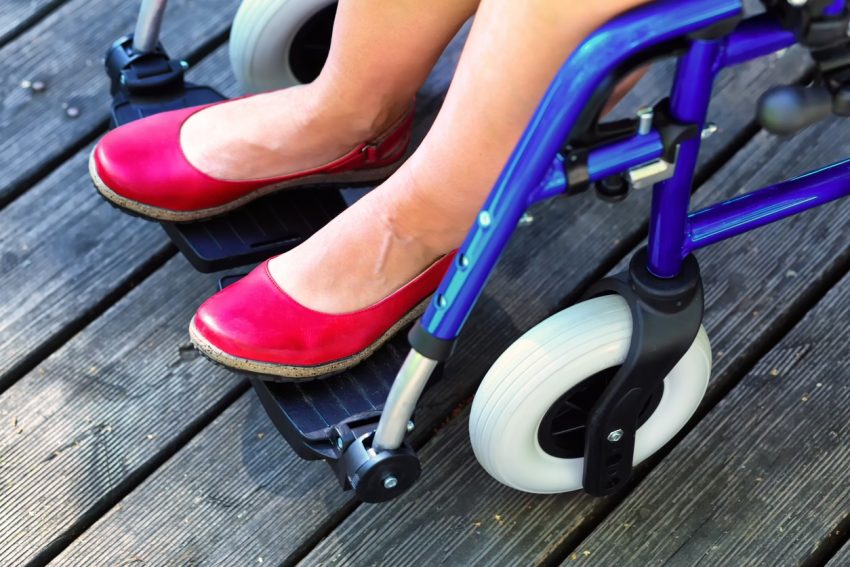After a spinal cord injury (SCI), one of the last things you may be thinking about is your shoes. But your feet will require just as much care as other parts of your body affected by the injury.
Some people end up wearing orthotics, which comes with its own set of shoe considerations. Other people do not have to use any special bracing, which means there is no rigid barrier between their shoes and their feet.
Wearing shoes after a SCI will be different than it was before. You will most likely not be able to slip right back into your favorite pair- at least not without doing some evaluation. So before you start wearing shoes again, there are three things that you should know.
- Your feet may swell. A common complication in people with spinal cord injury is edema.
Edema is swelling, and it’s primarily found in the lower extremities such as legs, ankles, and feet. Edema occurs when paralyzed muscles are not able to pump blood back up the legs, and it begins to pool. The fluid from the blood can then leak out through the veins into the surrounding tissues.
Because of this, you should purchase shoes that are one or two sizes larger than what you were wearing before your injury. Larger shoes will help accommodate the swelling. Even if you don’t need the larger size when you first get up in the morning, you may find that as the day progresses, and your legs hang down in a seated position, your feet get bigger and bigger.
- You will need to let your feet go through an adjustment period. You shouldn’t throw on a pair of shoes for the first time after your injury and then wear them for a whole day. The first time you try on a pair of shoes, only leave them on for about 30 minutes. After that time period, take the shoes off and examine your feet. You should be looking for any spots that look irritated, darker, or red. Look closely at places like your ankles, heels, and toes. Bony areas are most likely to get irritated.
You should continue this adjustment process by adding on an extra hour each time you wear shoes until you have worked up to 12 hours total. If during that process, you see any irritated spots, you should stop wearing shoes until it has fully healed. When you try again, use a larger shoe, or one of a different style. Once the adjustment process is over, you will have a good idea of what type of shoe is going to work for you, and what type of shoe you should avoid.
- You should buy flexible shoes. Fashion may need to take a backseat when choosing your style. This is not to say you won’t find a pair of shoes that you like, but the looks of your shoes need to be secondary to their size, breathability, and flexibility. That means dress shoes, especially, may take longer to choose.
Shoes made of soft leather or cloth will be best, because they won’t put as much pressure on your skin. Flexible shoes will also allow for any curving of the foot due to muscle contractures. Soft, breathable fabrics, as opposed to hard leathers or vinyl, will also help prevent sweating. Sweating can contribute to skin breakdown. Clean, dry feet are less likely to get sores.
Healthy Feet
Limited feeling and movement in your legs and feet can make it hard for you to tell when a shoe is uncomfortable. You can cause an injury without even noticing. Keeping these three things in mind when beginning to wear shoes again will help you prevent problems and keep your feet healthy. And if necessary, you can find adaptive clothing– including shoes- online.
Author: Annie Beth Donahue is a professional writer with a health and disability focus.
